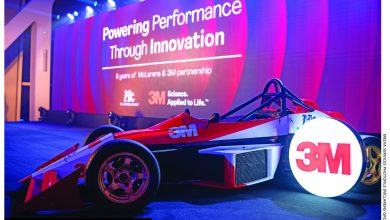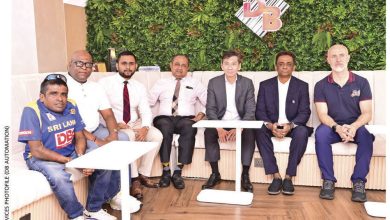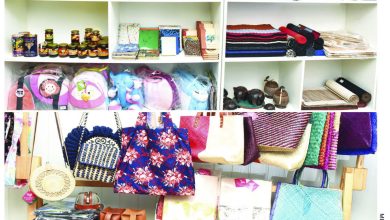UNDERSTANDING THE CONSUMER TO UNLOCK BUSINESS GROWTH

Marketing Director
The alcoholic beverage (alcobev) market in Sri Lanka is somewhat unique when compared to other countries around the world. It is dominated by spirits (high alcohol content beverages), which includes a substantial illicit spirit sector commonly called ‘kasippu.’ Within the licit alcohol market, arrack plays the dominant role holding the highest share of throat.
Beer in Sri Lanka enjoys a much thinner slice of the pie and approximately 85 percent of consumption is strong beer with a high 8.8 percent ABV (alcohol by volume). This is in stark contrast to other markets in Asia and across the globe where mild beer (4-5 percent ABV) is the most consumed segment.
Most consumers in Sri Lanka seek ‘value for money,’ which is measured in terms of the ‘kick-per-buck’ as they look to unwind instantly. This is again in contrast to consumer behaviour trends in other parts of the world where people drink for enjoyment in social settings and mild beers constitute the most significant component of social occasions.
The alcobev market in such countries has evolved to an extent that consumers seek more variety to fit their needs. And innovative trends have emerged with consumers being offered a range of flavoured low or zero alcohol products, craft beers, seltzers, ciders, RTDs (ready to drink mixes) and infused beers. This is a natural progression and a trend towards ‘premiumisation’ that’s happening globally.
While there is some interest in these varieties among consumers in Sri Lanka, the numbers are presently very small. The local alcobev industry has a long way to go and grow, and the opportunities are limitless.
What needs to be done to unlock this growth?
The world is changing rapidly even in beverage preferences. There’s an increase in fragmentation, an influx of new products and a blurring of lines between categories.
Marketing Director of HEINEKEN Lanka Keshini Subasinghe believes that in such a dynamic environment, unlocking growth must necessarily begin with a deep-rooted understanding of consumers – their diversity, needs, occasions of use and taste preferences.
She explains: “We must move from a narrow mindset of analysing the ‘category’ to a broader lens of understanding the true competitive set. And we should shift from asking ‘what are consumers drinking?’ to asking ‘why are consumers drinking it?’ and then instilling a consumer centric view in everything we do.”
She adds: “We need to consider all occasions when an alcoholic (or non-alcoholic) beverage is within the mindset of the consumer and not limit our vision to occasions when a beer would be considered. If we cross-segment and understand the occasions, we can better differentiate them. For instance, are consumers seeking to relax and reenergise or are they seeking to celebrate? Do they prefer to drink alone or are they looking to connect with friends?”
It is equally fundamental to understand socio-demographic changes such as the emergence of gen Z and increased consumption among women to better target underserved consumer groups within the legal drinking age.
Addressing diverse taste profiles is also very important. Do they prefer something sweet? Do they enjoy the ‘hoppy’ flavour or like a more prominent bitterness? These behavioural considerations, motivations and attitudes will ultimately shape their decision.
With this understanding, a marketer will be equipped to position brands, innovate products and hone in on achieving satisfaction through options that meet diverse needs.
How are government regulations and protocols propelling this journey?
The role played by government authorities in driving and shaping this journey of growth, can’t be understated. “In the recent past we have witnessed steps in the right direction, designed to encourage a fair and equitable playing field for all competitors, provide more access to licit mild alcohol in the tourist belts and drive the industry forward while unlocking revenue for the government,” notes Subasinghe.
She continues: “There’s still room to improve by providing licenses to make licit alcohol available in more outlets – thereby discouraging illicit alcohol operations. It would help if the customer and consumer base can be widened through e-retail and online selling with the right protocols in place. Lastly, an opportunity exists to widen the ability for innovation such as allowing manufacturers to move beyond beer into ciders and beer blends in the range of 0.0-4 percent ABV.”
Can a culture of moderation be encouraged through responsible consumption?
Both governments and companies must encourage the responsible consumption of alcohol so that it is neither detrimental to the individual’s health and personal life nor harmful to society.
Subasinghe elaborates: “We at HEINEKEN clearly identify with our role of encouraging moderation and responsible consumption. HEINEKEN believes that when consumed in moderation, alcohol can be part of a well-balanced healthy lifestyle. We are unwavering in this principle and ensure that consumers around the world always have a choice through an extensive product portfolio, which includes zero alcohol beverages.”
Globally, HEINEKEN’s vision is to brew a better world, and champions moderation and drinking for enjoyment. The company has pledged to tackle the harmful side effects of alcohol and works with governments and nongovernmental organisations to promote safer practices such as not drinking when driving, no underage drinking and a reduction in excessive consumption. HEINEKEN does all this using the power and reach of its brand in an engaging and inspiring way.
– Compiled by Yamini Sequeira
Telephone
4866575
Email
info@heineken.com
Website
www.heinekenlanka.com






